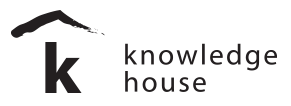
Math
My unique curriculum incorporates basic and advanced content from elite US private and public schools and Singapore Math. This helps students develop a mastery of mathematical concepts, a love of math, and self-identification as mathematicians!
Instruction encompasses three stages of mastery from the concrete level to the pictorial stage to abstract understanding. Fluency in number sense and place value are explored and understood. Mental math and word problem solving are primary skills. Singapore Math brings the real world to the children and helps them understand the math all around them.
By the time they graduate from 5th grade, students are already well versed in most of the following topics that are taught in 7th and 8th grade in public schools:
Proportional relationships: Students deepen their understanding of ratios to investigate proportional relationships, to solve multi-step, real-world ratio problems using new strategies that rely on proportional reasoning. They are well-versed with ratios, unit rates, equations and the constant of proportionality. They also study a wide variety of applications such as tax, commission, mark-up, discount, and error.
Number systems: Students extend the operations of addition, subtraction, multiplication, and division to include positive and negative integers and build fluency with evaluating numerical expressions. The contextual setting is used to develop students understanding and give meaning to the study of operations and properties of integers.
Numerical and Algebraic expressions: Students manipulate expressions into different equivalent forms as they expand, factor, add and subtract numerical and algebraic expressions and face authentic, real-world, multi-step problems.
Equations and inequalities: Students create and solve linear equations and inequalities from tables, graphs, and verbal descriptions and represent equations and inequalities on number lines. They encounter real-world situations that can be modeled and solved using equations and inequalities.
Percent and scaling: Students expand on and apply their understanding of percentages by studying percent increase and decreases, percent applications such as tax, and simple interest and scaled geometric drawings.
Geometry: Students apply algebraic and proportional reasoning skills to investigate angle relationships, circle measurements, uniqueness of triangles, and solid figure application problems. They are competent in a variety of topics including angles, triangles, polygons, and circles. They investigate similarity, discover and use formulas to calculate area and volume of 2 and 3-dimensional figures and apply their learning to real-world problems.
Statistics and probability: Students investigate how to use sampling to make inferences about larger populations of interest, how to select a random sample from a population, and how to use data from the random sample to learn about population. They learn the difference between variability in a population and sampling variability.
Students have their first encounter with probability as they develop their understanding of probability through calculating theoretical probabilities. Students learn how to draw and interpret different graphs like line plots, box and whiskers, leaf and stem plots.

“Both of our sons have been students of Praveena for 6 1/2 years, from 2nd grade to 5th grade. We credit her dedication, caring and organized lessons for enabling them both to make it into the ATP program. They both also advanced to 8th grade math when they started the 6th grade.
In her math classes, she keeps the students steps ahead of the regular school curriculum which makes them well prepared for the current and following school years. Praveena has been the best teacher we have experienced. We highly recommend her to our friends.”
Eunice Kuwahara – Parent
